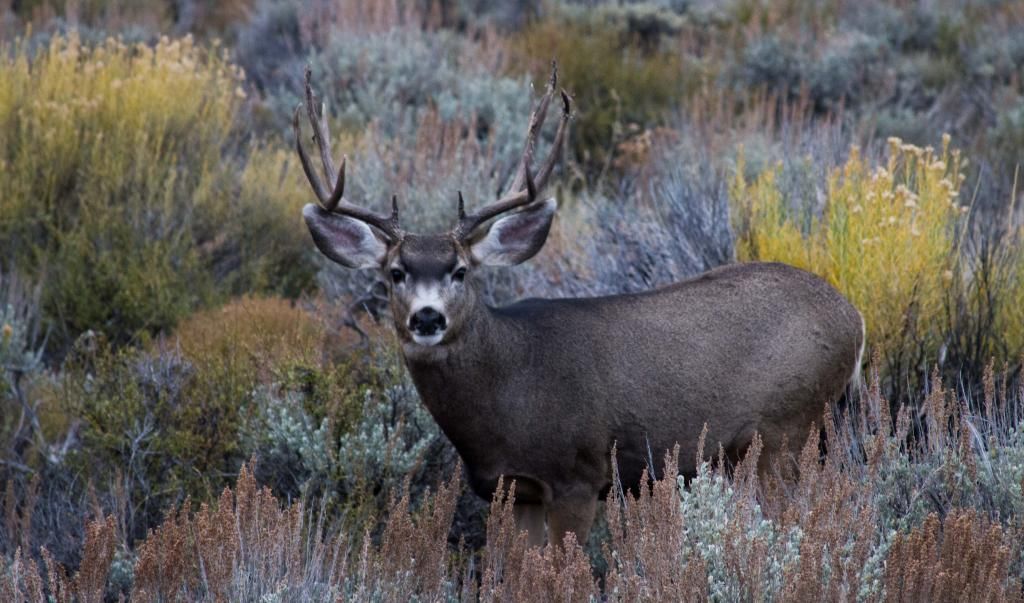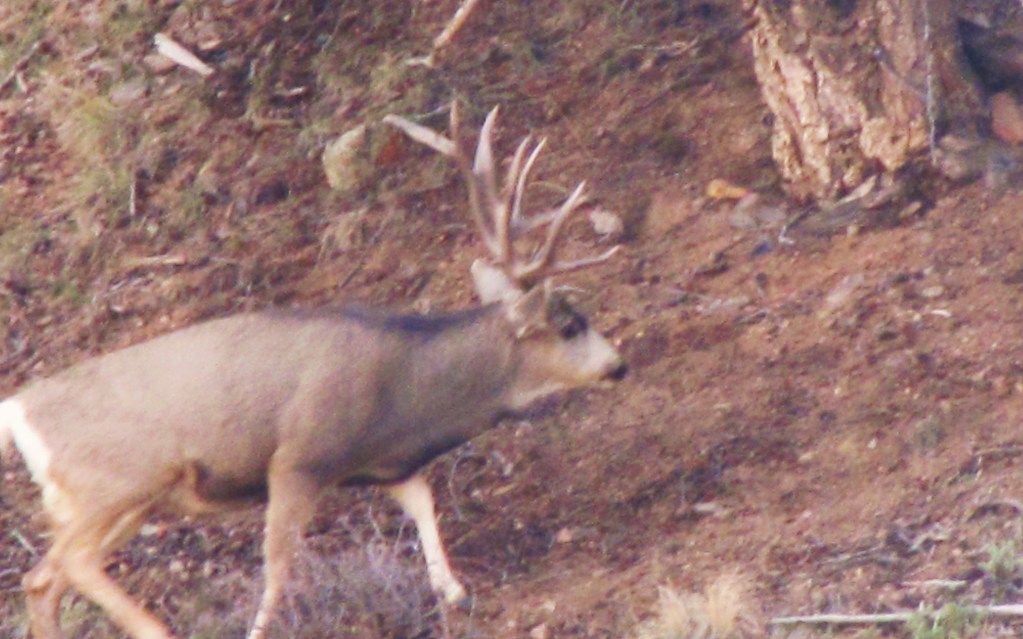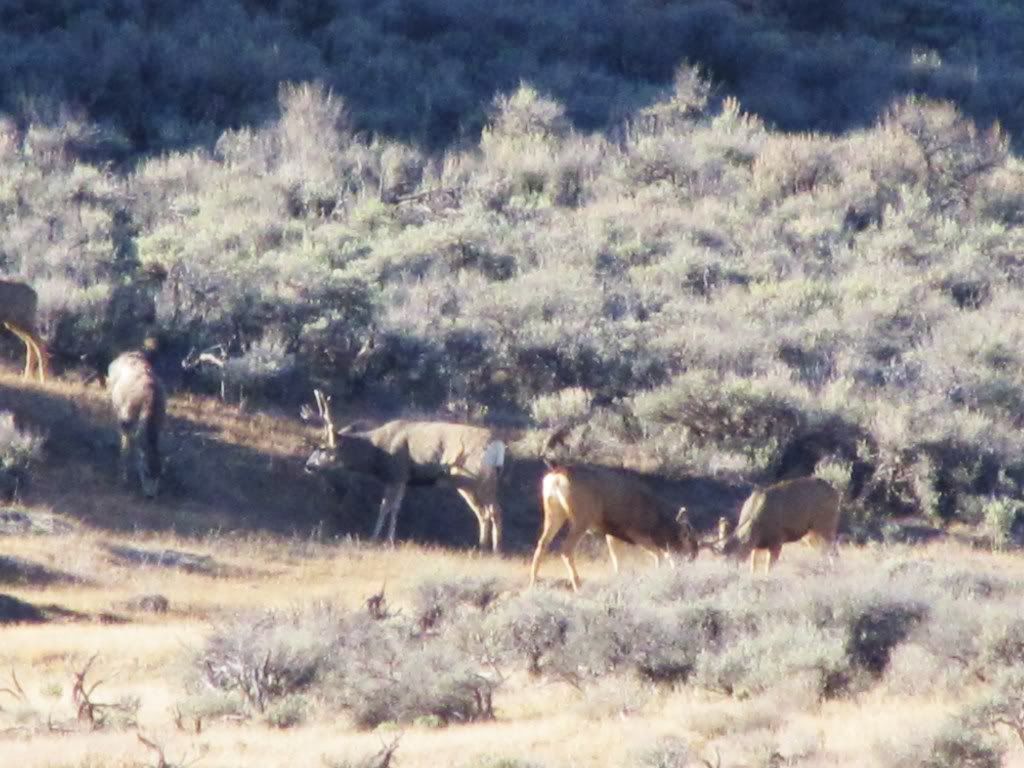I am going to be chasing MD for the first time this fall. How do you tell if a mule deer buck is mature? Is it like whitetails, where you look for a roman nose and a swayed back?
How to determine a mature mule deer
- Thread starter siwulat
- Start date
Musket Man
Veteran member
Big heavy horns are always a dead give away! lol. I look for heavy bases and in my experience alot of times older bucks that are past their prime will have somewhat odd shaped horns. You can see their age in their face too. Roman nose, more grey in their face. I cant quite put it into words but you just know they are an old buck when you look at them.
Mike E. Has some books that will help, you will learn bunches from his most recent book. I found "Mule Deer Country" by Geist to be equally informative, but it is mostly about biology/behaviors with great pictures of small to large mature bucks. Read both and you are well armed with MD knowledge. Most MD help resources tend to focus on judging antler size, which I think is a pretty good way to solve the riddle. If the antlers look big enough, the buck is probably mature enough. If you hunt early seasons, with groups of bucks sighted, sometimes you can see one very much larger. But the pictures in these and similar books will help. They will be a decent substutute for getting out and looking at bucks. Just not as much aging deer on the hoof materials for MD, as far as I know, as there is for WT. MD are generally accepted to have started as a cross between WT and Blacktails. So, what generally applies to aging a WT will generally apply to a MD. Ask the local warden/biologist what is the average ear tip spread in the area. Decide on what you are looking for, let's say it is a representative mature buck, 21-24" ish wide rack. For most areas, if he is close to, at or just past his ears with decent height, he'd probably qualify. If he is crazy hi, heavy and or wide, just shoot. Nearly every mature buck I've killed had a roman nose, not all were sway backed, but I can 't say I've ever used either to determine maturity in the field. Just something I noticed. I'm lucky enough to have seen enough bucks I just know anymore. I hope some other members here can give you better yardsticks.
RICMIC
Veteran member
A few years ago, while hunting at 9,000' in Wyoming, my brother was sizing up two bucks. The bucks were probably only 1 1/2 to 2 1/2 years old, as they had thin 3x3 racks. My guess was that they were twins and wanted my bro to hold out for something else, but he was determined that one buck was much bigger, so he shot it. It was Sept. 15th, and one buck had his summer coat, while the other had his winter coat. The gray coat looked bigger (but it wasn't). I find the mature mulies that I have shot are much blockier bodied than the NE Minnesota whitetails where I live. We have big deer up here, many dress out over 200#, but I have never shot a whitetail over 110" or nearly as big bodied as mule deer. I have four mulies in the 150's. If the rack has good mass, then it's likely a mature animal.
Colorado Cowboy
Super Moderator
Defining "mature" is like defining what is a beautiful women! Mature to me means able to breed the does, which forkies (and even some spikes) do. Bucks generally grow throughout their life, at least as long as nutrition and health remain good. Older bucks start to decline when their teeth start to go and when they can't get good nutrition. As others have said antler width, height and mass all get larger as the buck ages. Obviously genetics have a lot to do with how big they actually will grow.
With all this being said, it all depends on how you perceive your potential target. I have shot lots of bucks that suffered from "shrinkage" the closer I got. It really helps to have other bucks around for comparison. Tim's post is spot on. just remember....if you like it, take it!
With all this being said, it all depends on how you perceive your potential target. I have shot lots of bucks that suffered from "shrinkage" the closer I got. It really helps to have other bucks around for comparison. Tim's post is spot on. just remember....if you like it, take it!
Thanks everyone. Lots of good information here. It sounds like alot of what is used for whitetails can also be used for MD. Thanks again!
lostinOregon
Member
laxwyo
Very Active Member
This!!Body mass, brisket depth, blocky head/jowls/shortened nose appearance, built up front shoulders, appearance of short squatty legs. You generally know it when you're looking at one before antlers come into play.
You can see a white faced buck with with a big body and short legs easier than you can see antlers. The most important thing about these features is they are isolated to the deer itself. You are not reliant on having other deer present for these features to stand out. They will be exaggerated next to younger, bucks, but not reliant.





